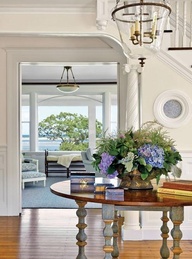What does the word professional mean? Does it mean doing your job well and being educated in the field you are working in? Does it mean you have a college degree to perform your job well? Being recognized and acknowledged for your work accomplishments? Or does it mean the way in which you conduct yourself with clients and the public while you are tying to perform your job to the best and fullest capacity that you as a professional have been trained?
All of the above are good questions, and besides searching for the formal definition (of which I have), here is my take on functioning on a professional level both in the business world of the self-employed and in corporate America.

Schooling an proper education of course add to the term professional. However, it takes many years of hard work and labor in the industry of which you have chosen to become a professional. Mistakes are made throughout the years and not only in the beginning stages of a career path, ongoing errors and mistakes are what makes a professional just that continually learning along the way.
None of us come out of an educational institution with the title professional; not doctors, dentists, lawyers and the list goes on. The title, respect and reputation has to be earned to be called a professional.
I look at the world of professionals in many different ways. Professionals I work with are skilled plumbers, painters, electricians, contractors, laborers, construction workers, store and business owners and manufacturer's reps. as well as professional marketing and computer professionals. These people I consider "professionals" and may or may not have a college education. That being said, I would never throw them off my team of preferred vendors. Because on my team, I know I have the most skilled laborers in their field and have earned the respect and reputation to be called a professional.

These professionals I mention are exactly that. They have worked in the trade for many years. Quality contractors, whether it be the blue collar worker or the shirt and tie marketing person, all deserve the respect on a level of professionalism for their knowledge and education gained from years of experience. These qualities and attributes should account for something.
Professionals have the knowledge and know-how to get a job done from beginning to end and the proper steps that need to be taken for a successful project outcome.
When a professional is hired, the client or customer should already know that they are paying for their expertise and expertise of the vendors that the professional may contract with in order to execute the job in a professional manor.

Being a professional means fulfilling responsibilities of time and project management. If a professional is hired, let them do their job, this is what they are being payed for.
What is the value of hiring a professional; why settle for the cheapest possible solution. This only winds up costing more money in the long run. A professional is skillful and does their job well. They know what glitches may arise during a project because they've performed this job many times in the past. There is an added cost value to hiring a professional.
Here are some facts that go into the cost of paying for a hired professional:
- You are paying for a value of the relationship with the hired professional and their vendors.
- You have hired a professional for their expertise to complete a job. Requesting the professionals vendor resources and products in which goes into the job as a whole should not be considered. The goal and the successful outcome of a professional job includes the creation of the projects products and vendors proposed for the completion of the job. If the service was something that could have been handled without the professional, then why contract them in the first place?
- It may not be product you are paying for, it is also the professional advice and service of which the professional was hired.
- One question a professional may always ask is this "is there a budget we need to work with?". Try to establish a budget for a project. A true professional is willing to work within the proposed budget. Being upfront and honest with the professional alleviates unnecessary time spent that could eventually cost more in the end. The professional should be aware of your budget.

A true professional will always treat their client right and fair and in turn the client will receive quality results.



















































